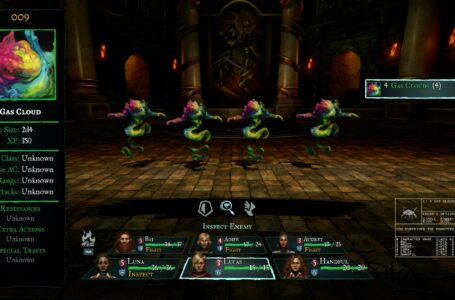The lesser-known “dere” characters found in anime
We’re all familiar with tsunderes and yanderes. These popular tropes can be found often in our favourite manga, anime and games – typically applied to women love interests – and inform us of the shape and tone of the romance we’re about to watch unfold. Will our plucky main character have to thaw the heart of the tsundere ice queen to get to her sweet centre, or fend off a feral yandere until he learns to appreciate her mad love?
The “dere” suffix usually denotes a romantic character archetype in anime, which itself comes from the phrase “dere dere”, meaning “lovestruck”. You may have met some others, but there are also more than you may expect – the internet’s consensus is that there are between 12 and 20 total deres. Let’s take a look at some of them!
Tsundere

Let’s get the famous one out of the way first; it’s not like I like it or anything. Tsundere characters act cold and uncaring towards their love interest in order to hide their own mushy feelings – even if their love is made obvious with presents or other acts of services, the tsundere will deny it. The term comes from the Japanese word “tsuntsun”, meaning “grumpy”!
Tsunderes are big fans of calling their love interest a “baka”, and are typically quite arrogant, not to mention cruel and even violent. They almost always manage to break out of their icy shell and admit their true feelings in the end, though, shedding their tsun to embrace the dere.
Examples include Asuka from Neon Genesis Evangelion, Tohsaka Rin from Fate/Stay Night, and Faye Valentine from Cowboy Bebop.
Yandere

Yandere is kind of like the thematic opposite to the tsundere. Yanderes are well aware of their romantic feelings – maybe too aware. Yanderes are mad with love, obsessing over their love interest and showing extreme jealousy for anyone who gets in between them.
They are also far more vulnerable than the tsundere, typically placing complete trust in their crush, but simultaneously cannot value anyone’s feelings above their own. Typical yandere traits include possessiveness, stalking, worship, manipulation and co-dependence.
If you’ve watched Future Diary, you already know that Yuno Gasai is the ultimate yandere. Other examples include Lucy from Elfen Lied and Himiko Toga from My Hero Academia.
Deredere

There’s (usually) no dark-sided twist to the deredere character. They are sweet, happy-go-lucky and, of course, lovey-dovey. Derederes wear their hearts on their sleeves and are openly affectionate, even if they might not be raring to confess their love right off the bat.
Derederes don’t typically get jealous, as the yandere and the tsundere might – if their crush is happy, then they’re happy too. Also unlike the yandere and tsundere, derederes don’t define themselves by their ability to love (or lack thereof) – they are confident and whole people, whether they’re single or not.
This archetype is the most flexible on this list, as derederes can possess a wealth of other character traits beyond being nice and lookin’ for love. Shojo protagonists are often derederes, such as Usagi from Sailor Moon and Madoka from Mahou Shoujo Madoka☆Magica.
Dandere

Danderes are quiet and meek, and often too afraid of getting something wrong to speak to anyone, let alone their love interest (the term comes from the word “danmari”, meaning “silence”).
These characters are often mistaken as emotionless or uncaring due to their habitual silence, but in reality are extremely anxious and sensitive. It usually just takes the right person to coax them out of their shell and help them come into their own as a talkative, sweet and confident person.
Examples of danderes include Kisa Sohma from Fruits Basket, Kanao Tsuyuri from Demon Slayer, and of course Shoko Komi from Komi Can’t Communicate.
Kuudere

Kuuderes are kind of like dialed-back tsunderes. They are cool, calm and collected to a fault, and seldom show any outward emotions. Sometimes they even are completely emotionless, but more often than not they come to unearth their repressed feelings. The term comes from the Japanese word “kuuru”, or “cool”.
Kuuderes are usually kind of cold, unsympathetic and sarcastic, and are often silent by choice, unlike the dandere. However, just like the dandere, true love will often break the spell and allow the kuudere to set loose their emotions.
The best example of the kuudere is probably Raven from Teen Titans, but see also Kyoko Kirigiri from Danganronpa: Trigger Happy Havoc and Homura Akemi from Mahou Shoujo Madoka☆Magica.
Dorodere

Doroderes are kind of like reverse tsunderes – and I’m realising now that tsunderes really are the benchmark of all anime archetypes. Doroderes are sweet and cheerful on the outside, but in reality are hot messes full of animosity and resentment; while their grudges don’t always target their love interest, it also isn’t out of the question.
The dorodere acts lovey-dovey to conceal their true feelings – hatred. Typically this archetype is after the full subjugation of their love interest, similarly to the yandere, and will demand complete servitude of them once their true nature has been revealed.
This term was created specifically for Luca Trulyworth from Ar tonelico II: Melody of Metafalica, but can also include Nagito from Danganronpa 2: Goodbye Despair (a rare male example of any dere!) and Cutthroat from Akudama Drive.
Hiyakasudere

Originating from the word “hiyakasu” – meaning “to banter” or “to make fun of”, this trope is also known as “teasedere” or “smugdere” in Western audiences. Hiyakasuderes are playful and mischievous characters who enjoy flirting, a lot.
Hiyakasuderes often strive for attention, but can simultaneously be charming and friendly. Saying that, these characters are often led by their ego, and may not be looking for romance so much as a source of entertainment. They are often delighted by embarrassing people, especially those “lesser” than themselves.
Examples of the hiyakasudere include Blair from Soul Eater, both Hikaru and Kaoru from Ouran High School Host Club, and Teru from Mob Psycho 100.
Oujidere/Himedere

There’s one of each of this trope for male and female characters, but they both denote basically the same thing. Oujideres and himederes wish to be treated like a prince or princess, respectively, by their love interests as well as everyone else.
These characters are usually arrogant to the extreme, and see themselves as superior to everyone around them. They demand that others carry out their dirty work, and put themselves first in every conceivable instance. It takes a character with true insight to find love beyond the oujidere/himedere’s inflated ego.
Examples of this trope include Mary Saotome from Kakegurui, any Snooty villager from the Animal Crossing games, and of course Hatsune Miku in World Is Mine.
Oujodere

This character is similar to the himedere, without any of the yucky stuff. Oujoderes are ladylike, strict yet gentle, proper yet kind. Oujoderes are usually calm and peaceful, but with the same enthusiasm and friendliness as a deredere.
Oujoderes don’t have to demand to be treated like a princess – instead, they actually act like one. They are not arrogant or bossy, but rather endear themselves to others with their compassion and selflessness.
Examples of the oujodere include Koyou Ozaki from Bungou Stray Dogs, Tomoyo Daidouji from Cardcaptor Sakura, and Tohru Honda from Fruits Basket.
Erodere

Eroderes, put simply, are perverts. They use erotic and sexual means to achieve their goals, but typically their goals are just to be erotic and sexual in the first place. Once they have found that all-important True Love, they will ditch the lewdness in favour of a more pure and wholesome personality.
Eroderes are far more suggestive and explicit than their cousins, the hiyakasuderes. They are not so interested in winning hearts as they are with satiating their own lust. It may surprise you to learn that this trope usually favours male characters!
Examples include Minoru Mineta from My Hero Academia (of course), Teruteru Hanamura from Danganronpa 2, and Issei Hyoudou from High School DxD.
Hinedere

The hinedere is a cynical, arrogant and often cold-hearted character who is easily annoyed by others, usually including their own love interest. The thrill of this trope comes in the defeat of their dismissive and withdrawn attitudes.
Hinederes will often act hostile towards their small friendship groups, preferring to act as edgy lone wolves. But, like all others, their soft sides can be revealed in the right situation.
Funnily enough, this is another trope that favours male characters. Examples include Koya from InuYasha, Victor Sinclair from Karin, and Sasuke from Naruto.
Shundere

Sad boy hours. Shunderes are constantly depressed, though they usually don’t have much of a reason to be – it’s just part of who they are. They are typically loath to talk about their feelings with anyone outside of their love interest. Won’t you help them see the sunny side of life?
Examples of the shundere include Crona from Soul Eater and Nagara from Sonny Boy.
Darudere

Daruderes are the lazy type – always tired, sluggish and extremely unwilling to do anything at all, except to help the person they love.
It’s not that the darudere is emotionless, it’s just that they can’t be bothered to express themselves most of the time. While they are typically distant and full of complaints, they are also fairly easy-going and can pull through when you need them most.
Examples include Konata Izumi from Lucky☆Star, Yuu Sonoda from Sakura Trick, and Kirito from Sword Art Online.
Hajidere

Hajideres are incredibly quick to embarrassment, which leads to a wealth of cutesy moments. Their shyness is only exacerbated around their crush.
Like a more extreme version of a dandere, hajideres can often have trouble speaking or functioning at all in front of their love interest, and often make their feelings incredibly obvious in the process. You should not expect a hajidere to confess, or to accept a confession without passing out first.
Examples include Haida from Aggretsuko, Deku from My Hero Academia, and Chi Chi from Dragonball.
Usodere

Usoderes are liars – that’s what they do. These characters are desperate to say whatever it takes to hide their flaws from their love interest, and it takes a lotta work to get them to behave honestly – though all that work might just be worth it in the end.
The term originates from the eroge visual novel Usodere!, in which girls attempt to trick and lie to the main character in order to inherit his fortune. Other examples include Reigen from Mob Psycho 100 and Celestia Lundenberg, as well as Kokichi Ouma, from the Danganronpa series.
Bakadere

My personal favourite dere on this list. The bakadere, as the name suggests, is a character who is clumsy and/or stupid to the extreme, typically lacking any and all common sense.
Bakaderes are usually very innocent and sweet, but have to be looked after by their more sensible love interest. They are usually a source of embarrassment and disastrous situations, but also have a face that you just can’t stay mad at.
Examples include Atsuko Kagari from Little Witch Academia, Goku Son from Dragon Ball, and both America and North Italy from Hetalia Axis Powers.
Join The Discussion
Rice Digital Discord
Rice Digital Twitter
Rice Digital Facebook
Or write us a letter for the Rice Digital Friday Letters Page by clicking here!
Disclosure: Some links in this article may be affiliate links, which means we may earn a small commission if you make a purchase after clicking on them. This is at no additional cost to you and helps support Rice Digital!
- Anime to look out for this October - September 29, 2023
- Netflix original anime: the good, the bad and the ugly - September 28, 2023
- Post-apocalyptic visual novel Archetype Arcadia launches on October 24th, with pre-order discount available for PlayStation and Switch - September 26, 2023






